Justin Trudeau 2015 Election Campaign
Brand Reawakening (BRONZE)
Client Credits: Liberal Party of Canada
Gerald Butts, Principle Advisor
Katie Telford, National Campaign Director
Suzanne Cowan, Director of Advertising
David Herle, Strategy and Research – The Gandalph Group
Agency Credits: Bensimon Byrne
Jack Bensimon, President and Strategist
David Rosenberg, Chief Creative Officer and Writer
Jill Engleman, Group Account Director
Katelyn Porter, Project Manager
Maghan Cheesbrough, Agency Broadcast Producer
Thomas Shadoff, Media Director
Alex Gillespie, Media Buyer
Section I — CASE PARAMETERS
| Business Results Period (Consecutive Months): | August – October 2015 |
| Start of Advertising/Communication Effort: | August 6, 2015 |
| Base Period as a Benchmark: | 2013-2015 |
| Geographic Area: | Canada – National |
| Budget for this effort: | Over $5 million |
Section IA — CASE OVERVIEW
Why should this case win in the category (ies) you have entered?
Justin Trudeau is a political rock star, enjoying unprecedented popularity, gracing the covers of the world’s most influential papers and lauded for his progressive action socially, politically and economically. But just one year ago, at the outset of Canada’s election, Justin Trudeau was a long-shot.
Trudeau’s favourability had fallen steadily for a year, and when the election was called, Trudeau was in third place. He’d announced a bold plan to help Canada’s middle class, but a massive Conservative campaign framed him as too young, too inexperienced and “just not ready” to lead. The attack was so memorable, it was recalled verbatim by Canadians.
Large Conservative budgets would ensure a continued, relentless attack. And Trudeau would not engage in the same negative attacks. Politics for him is not about personal attacks. It’s about discussion, debate, disagreement – it’s about ideas.
However, these negative attacks would provide leverage to launch Trudeau’s campaign that contrasted negative with authentic, fear with hope and galvanized a nation.
It’s difficult to recall how poor Trudeau’s prospects were. Nobody thought he was ready for the job, and no candidate in the history of electoral politics in Canada had ever become Prime Minister from a 3rd place start.
Section II — THE CLIENT’s BUSINESS ISSUES/OPPORTUNITIES
a) Describe the Client’s business, competition and relevant history:
Justin Trudeau won the Liberal leadership in April 2013, raising Canadian Liberal hopes after a crushing 2011 federal election that left the Liberal Party with just 34 of 308 seats.
Trudeau’s support remained high until the Fall of 2014, when Canadians began to re-consider. Was Justin perhaps too young, too inexperienced, not mature enough? When asked how they would vote “if an election were held today”, Liberal support began to slide.
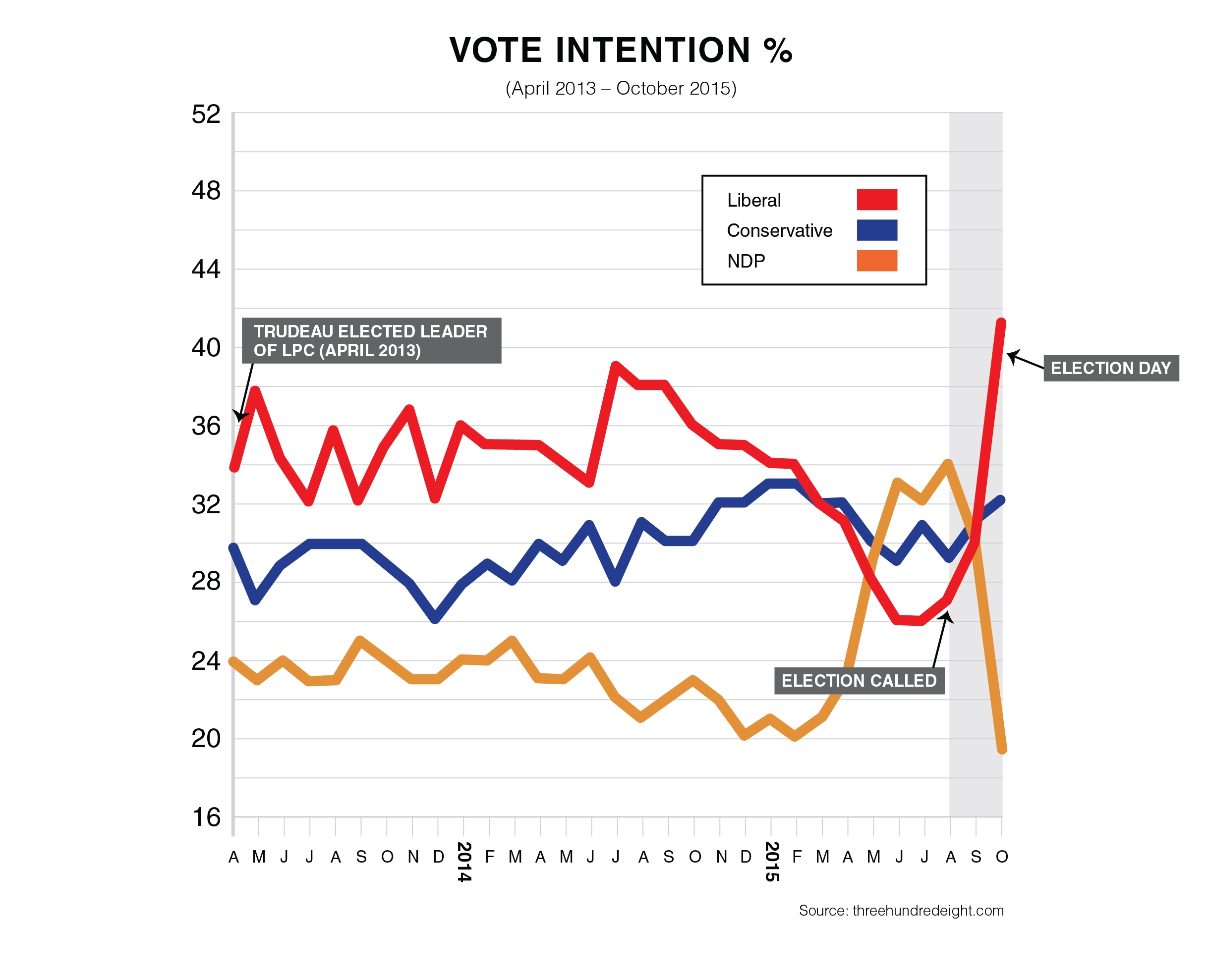
Harper had been trying to frame Trudeau as “in over his head”, but it was the May 2015, “Just Not Ready” ad that was most devastating. It positioned Trudeau as a shallow lightweight who made suspect decisions, his redeeming strength being his “nice hair”.
A massive media campaign drove the effects through the summer. In research, Canadians would say Justin Trudeau’s “just not ready”, unaware they’d integrated ad copy into their personal vernacular.
In April 2015, we were brought on board by Team Trudeau.
Justin Trudeau was in third place.
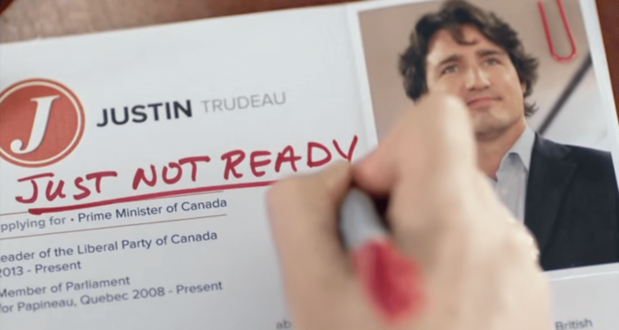
b) Describe the Client’s Business Issues/Opportunities to be addressed by the campaign:
Trudeau announced his bold plan for a fairer Canada and to help Canada’s struggling middle class in May 2015. The plan would reduce taxes for middle-class Canadians, lift 300,000 kids out of poverty and raise taxes for the wealthiest one percent of Canadians. By all measures, this would be a popular and differentiating platform. Middle-class Canadians sensed they were falling behind, struggling to pay for their kids’ education and save something for their own retirement.
But, polls remained flat. Advertising was needed to help Canadians understand Trudeau and his plan. But it became clear due to the Conservative attack, that communicating the plan for fairness would have to take a back seat to establishing Trudeau’s readiness.
Our challenge was to combat the positioning that had become so pervasive in the minds of Canadians.
c) Resulting Business Objectives: Include how these will be measured:
The ultimate objective, of course, was to win the election and form a government. When Harper called the election on Sunday August 2nd, Trudeau was in 3rd place, with 26% support, holding 36 of the country’s 308 seats.
With the momentum of a 9-month long downward trend, winning would require a sudden and dramatic rebound in support. It was no secret that the Conservative war chest would enable them to continue to dominate the ad wars. No party had ever before in history reached the Prime Minister’s office from 3rd place in a single election. With just 78 days until the election, Justin Trudeau was very much the underdog.
Section III — YOUR STRATEGIC THINKING
a) What new learnings/insights did you uncover?
In the three months before the election we developed hundreds of concepts and tested dozens in focus groups. We gained insight that was essential to Trudeau’s campaign strategy.
- There’s cynicism about politicians. Trudeau is naturally authentic, and his charismatic presence is necessary for advertising.
- Trudeau’s physical vitality reminds Canadians of his opponents’ traditional formality. Whenever we could, we would show Trudeau on the move.
- Safe political advertising concepts don’t get noticed. With a 78-day election, all advertising would be bold with a clear central idea.
The “Just Not Ready” ad established the “readiness” barrier we had to overcome, but the weak script and weak actors contributed to a sense that it was contrived and inauthentic, and in groups, people associated those negative attributes with Stephen Harper.
Harper’s attack provided a unique leverage opportunity featuring Trudeau’s authentic, bold approach to politics in contrast to Harper and his attack ad.
b) What was your Big Idea?
In a sea of negative politics, we would contrast Harper at every juncture and communicate Trudeau’s positive approach to politics, strength and readiness to lead. Part of this was having the courage to take personal attacks head on.
c) How did your Communication strategy evolve?
We worked closely with Justin Trudeau’s core team who had been with him for years, some since childhood. We debated strategy and tested hypotheses to overcome the readiness attack and to build support for Trudeau’s brand of politics.
The importance of authenticity, physicality and bold concepts meant TV/Video would be the dominant medium. We led video content and broadcast media. Trudeau’s team led online and social media. We shared content to reach Canadians through all channels.
The 2015 election marked the Liberal game-changing investment in rich data that provided a new level of insight, enabling them to target message and audience more efficiently.
Political campaigns require nimbleness. You can set a plan but it’s necessary to respond to what’s happening on the ground and to opportunities when they’re presented.
So, our plans were focused but purposefully broad enough to respond to situations as they arose.
d) How did you anticipate the communication would achieve the Business Objectives?
Canadians were desperate for change after ten years of Stephen Harper and had swung so far as to support the NDP, a party that had never before governed federally. If we could get Canadians to feel that Trudeau was indeed ready to lead, we felt we could engage them in understanding Trudeau’s plan for a fairer country and a bold new economic agenda. Not to mention Trudeau himself, a man with fresh ideas and approach. Then we might begin to win their vote.
Section IV — THE WORK
a) How, where and when did you execute it?
Ready
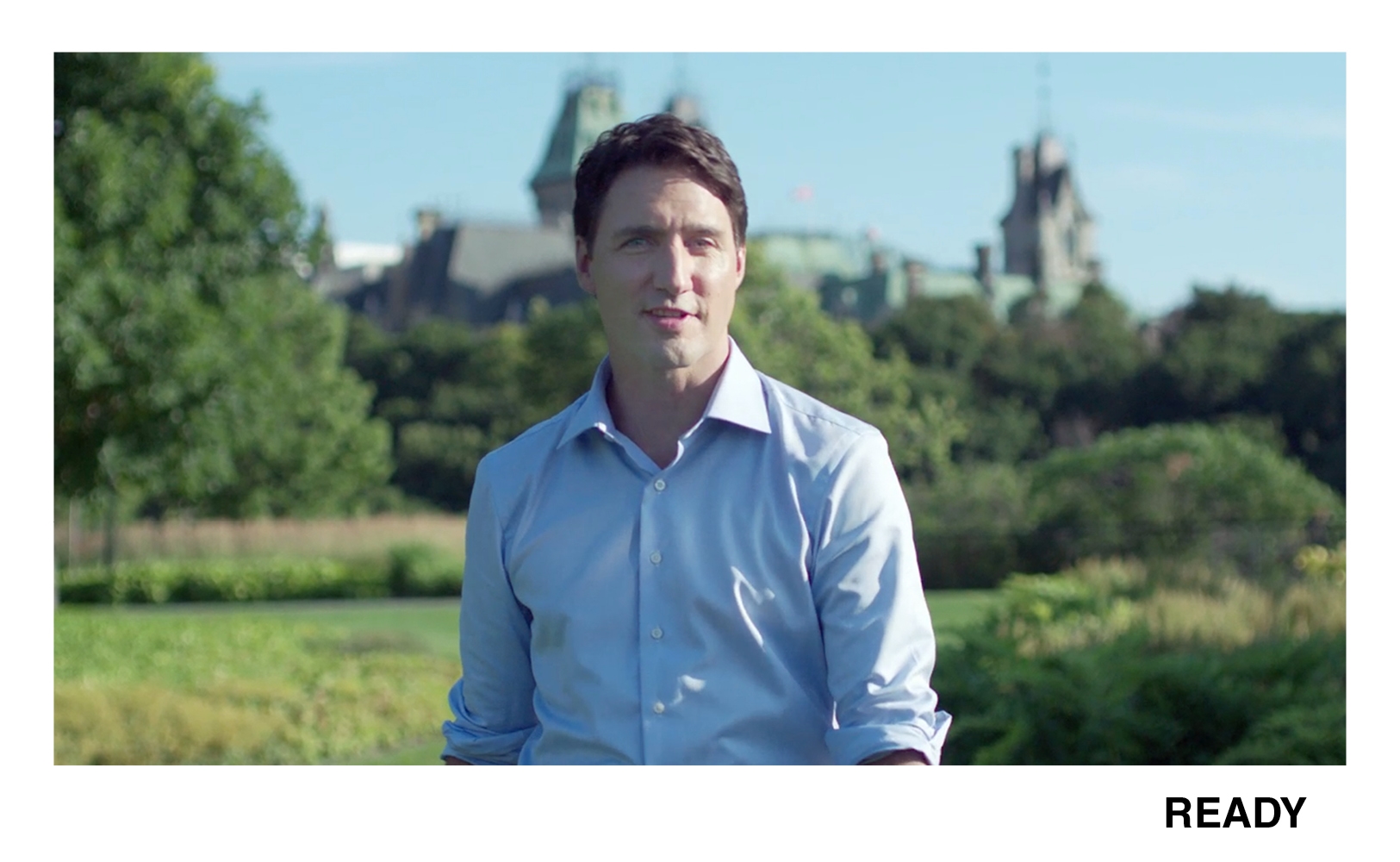
There’s an unwritten rule in political communication that you must never refer to your opponent’s line of attack against you, in your own advertising. If you do, all you’ll succeed in doing is to give it oxygen. We broke the rule and leveraged high awareness of “Just Not Ready”, taking the attack head on, turning it 180 degrees on its head, with Trudeau telling Canadians exactly what he wasn’t ready for.
Where Harper’s Just Not Ready was contrived, Trudeau was authentic. Where Harper was deceptive, Trudeau was straightforward and bold. Where Harper hid behind weak actors, Trudeau stood for himself. Where Harper was negative and disparaging, Trudeau was positive and hopeful.
Escalator
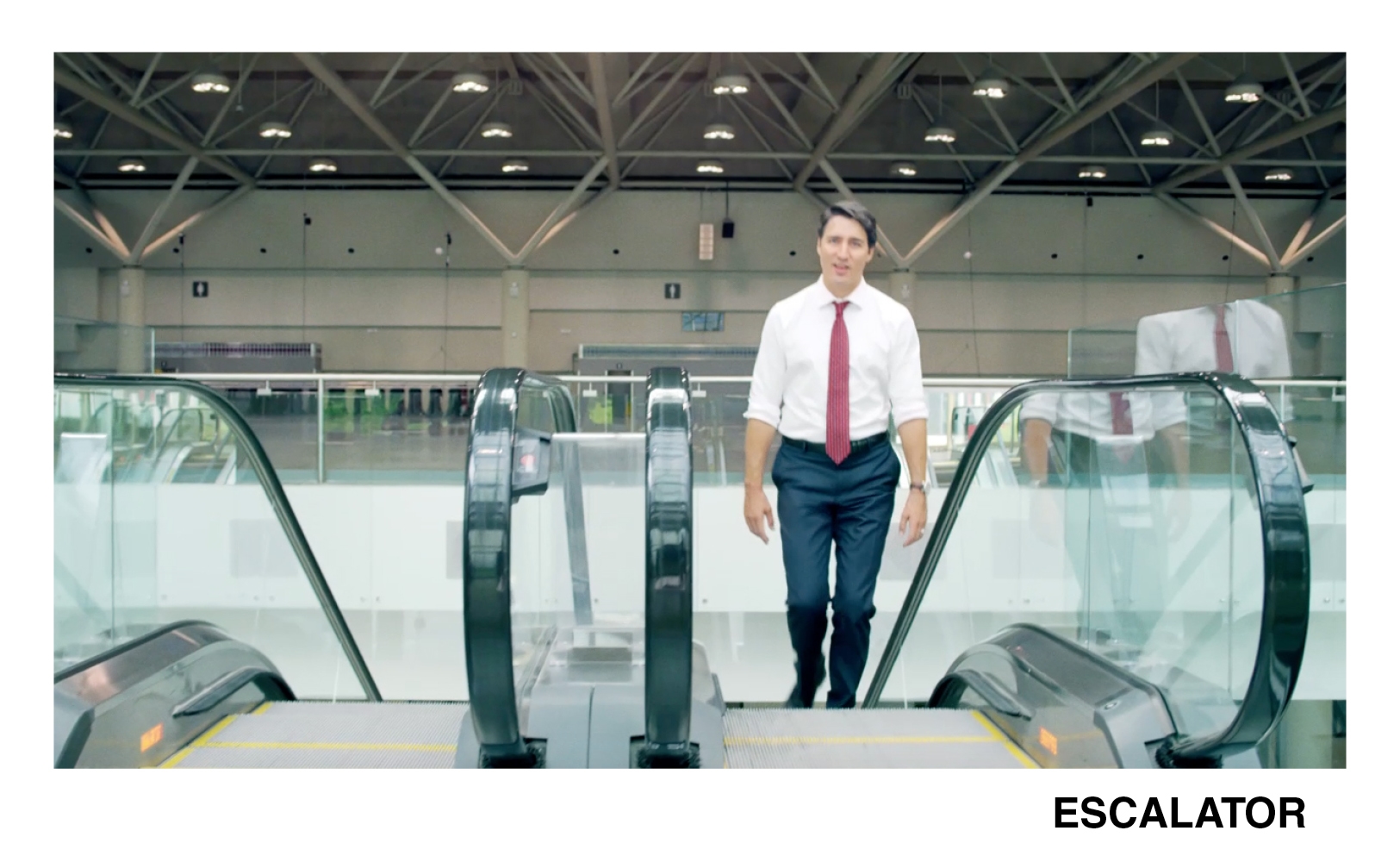
We knew from research that Canadians were not afraid to run deficits, if the borrowed money would be put to good use to stimulate the economy – by investing in the country’s crumbling infrastructure to create jobs. We used the metaphor of walking up a downward escalator to dramatized the middle class not getting ahead, and to help Canadians understand why it was necessary to invest to kick-start our stagnant economy.
Rally
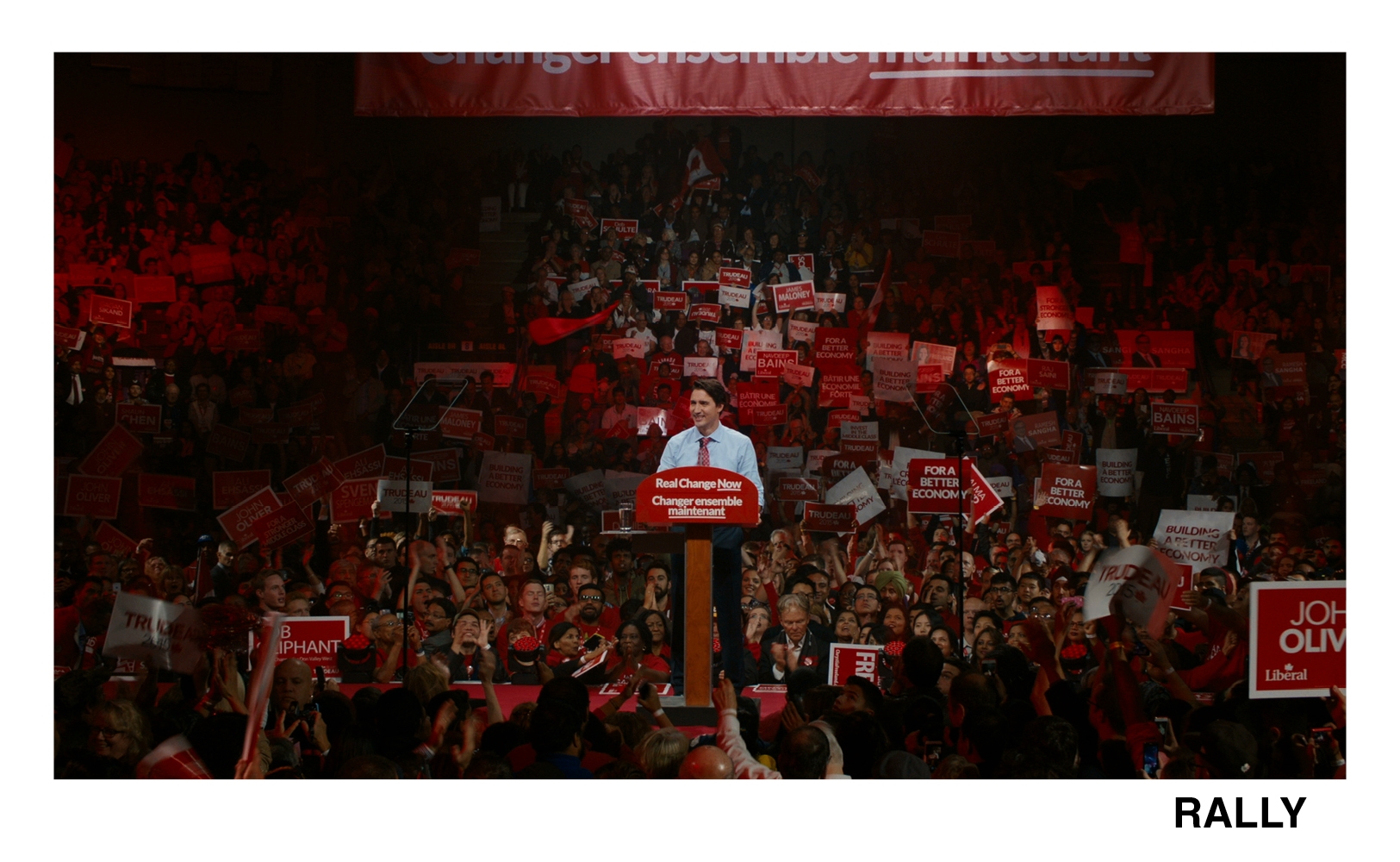
Support for Trudeau was growing as Canadians become more engaged in the election. They were responding to a candidate who was positive in the face of relentless attack, strong and confident, with a bold new direction for the country. And they were starting to come to their own conclusion about whether Justin was ready or not. “Rally” was the emotional crescendo of the campaign, capturing the buzz in the media and excitement and momentum on the campaign trail, and edited for all Canadians to feel. It launched on the Friday of Thanksgiving weekend, when Canadians would be sitting around dinner tables, debating with their families and firming up their vote.
Hazel
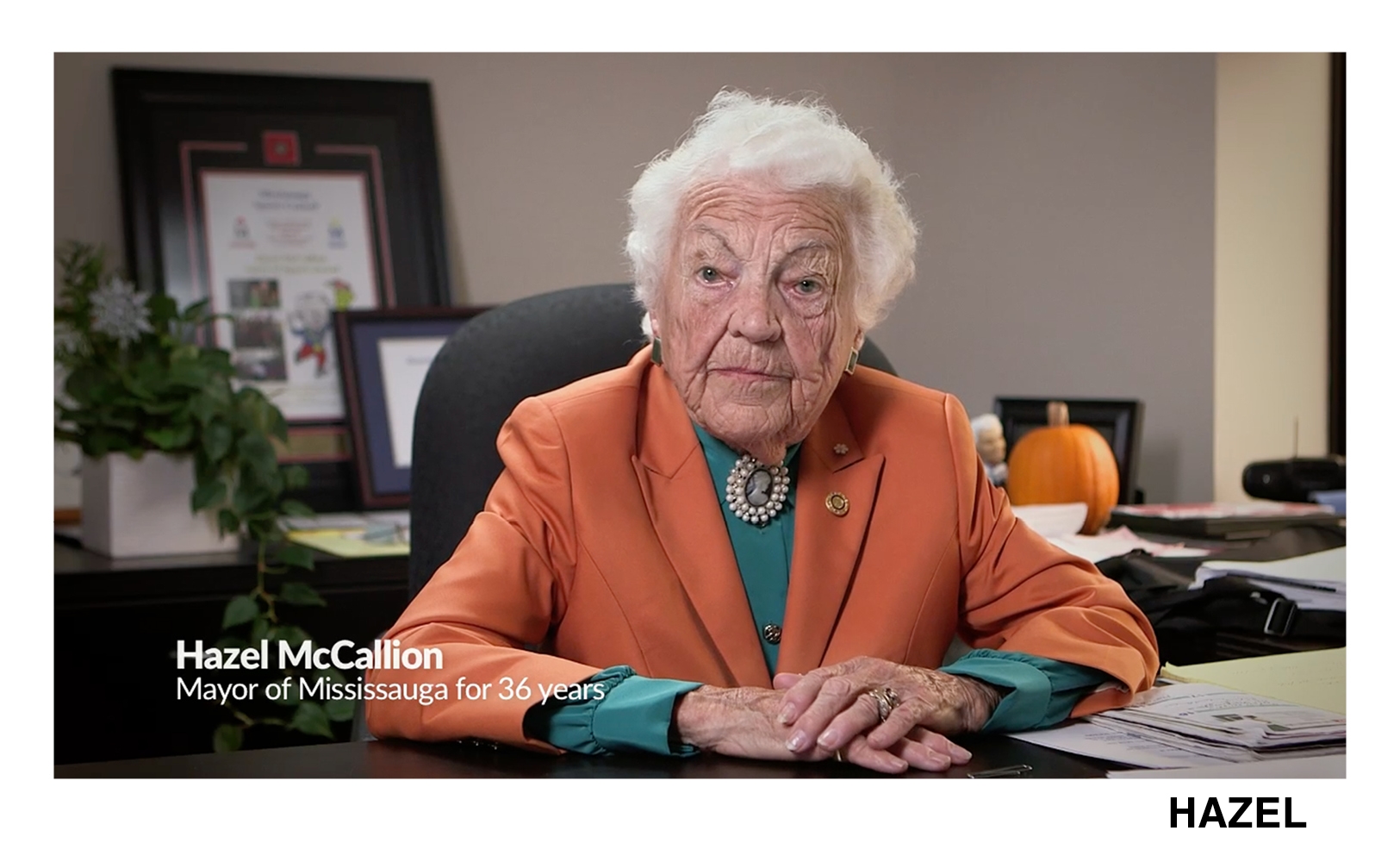
We were in the last week of the election and clearly feeling the wind in our sails, but there was one more thing we had to do from an advertising standpoint. Stephen Harper was not telling the truth, saying that Justin Trudeau would cancel pension splitting for seniors. Trudeau was working hard to correct the story, but Harper knew that few people pay much attention to what gets said on the hustings.
We got the brief at 6:30am on the Saturday of Thanksgiving, 9 days before the election. We had to be definitive in debunking the myth and engaging to be shared. We needed content that would go viral.
Humour is rarely used in political campaigns, but we believed it was the best way to expose Harper’s manipulative tactics, likening it to “those phone scams seniors get”. We shot the ad and launched it 4 days later in Trudeau’s strong social media channels and later in Blue Jays baseball. Hazel would represent senior empowerment and have the last word on the matter.
c) Media Plan Summary
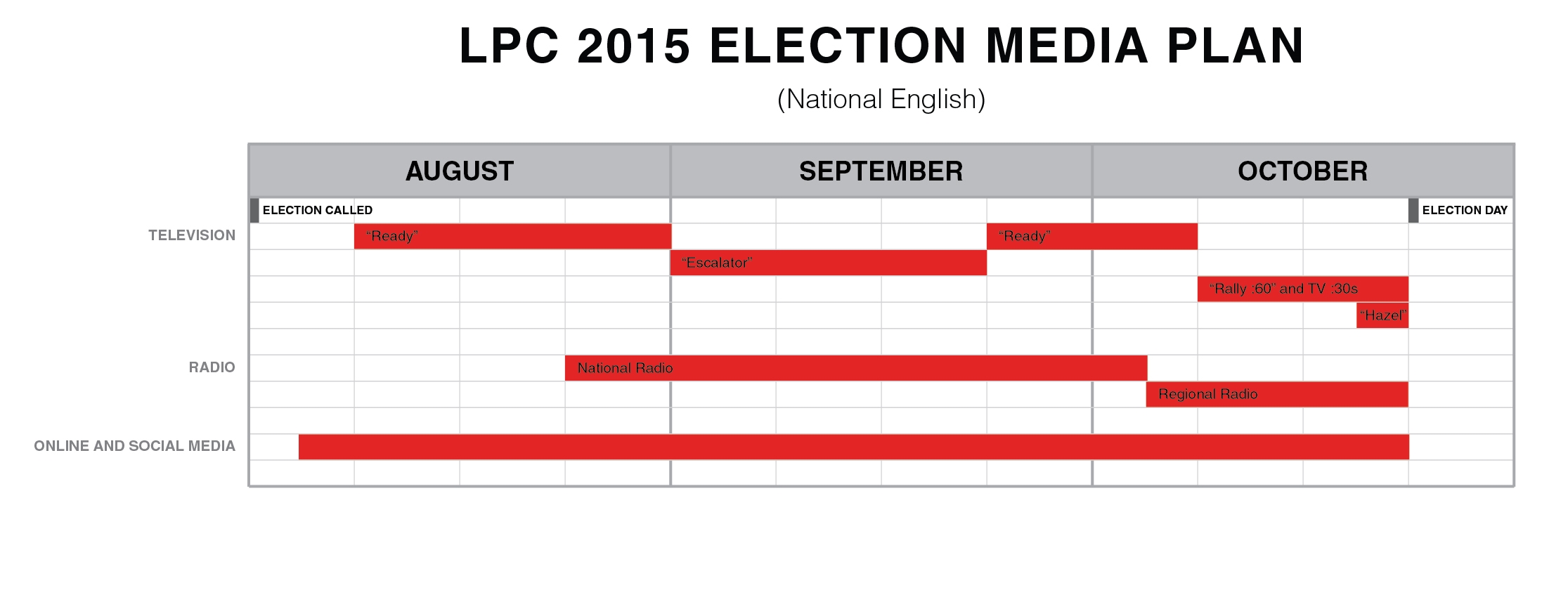
Our campaign launched the week the election was called. The campaign included national television and radio. Heavy national television investment behind the “Ready” ad at the outset of the campaign was used to help spark the change in the narrative.
Concentration and market priorities were determined and adjusted weekly or more frequently to be responsive to the changing priorities determined by the Liberal Party’s digital data and analytics.
Online advertising and social media ran deeply through the campaign and was managed directly by Trudeau’s team, integrating our offline content.
Section V — THE RESULTS
a) How did the work impact attitudes and behaviour?
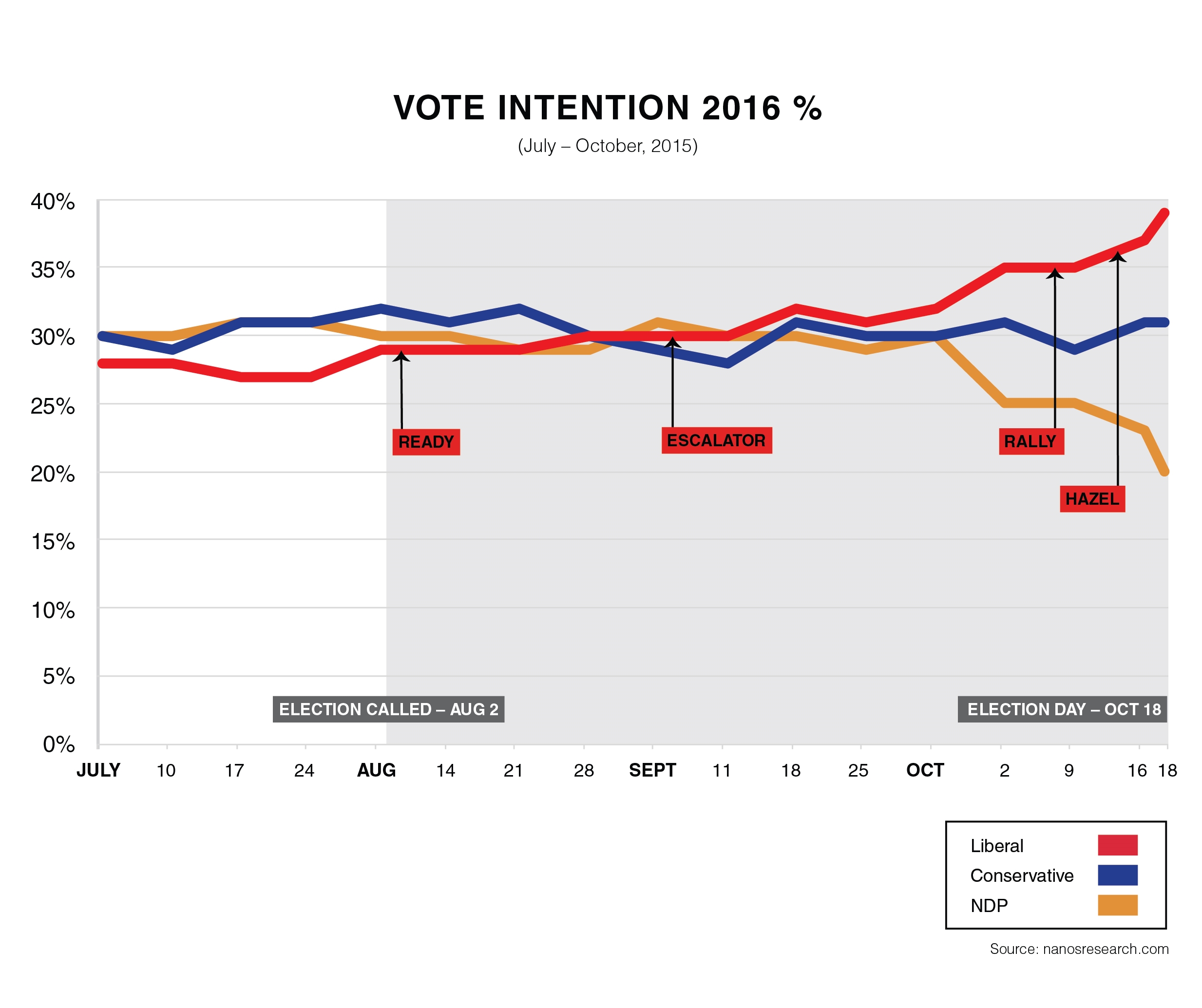
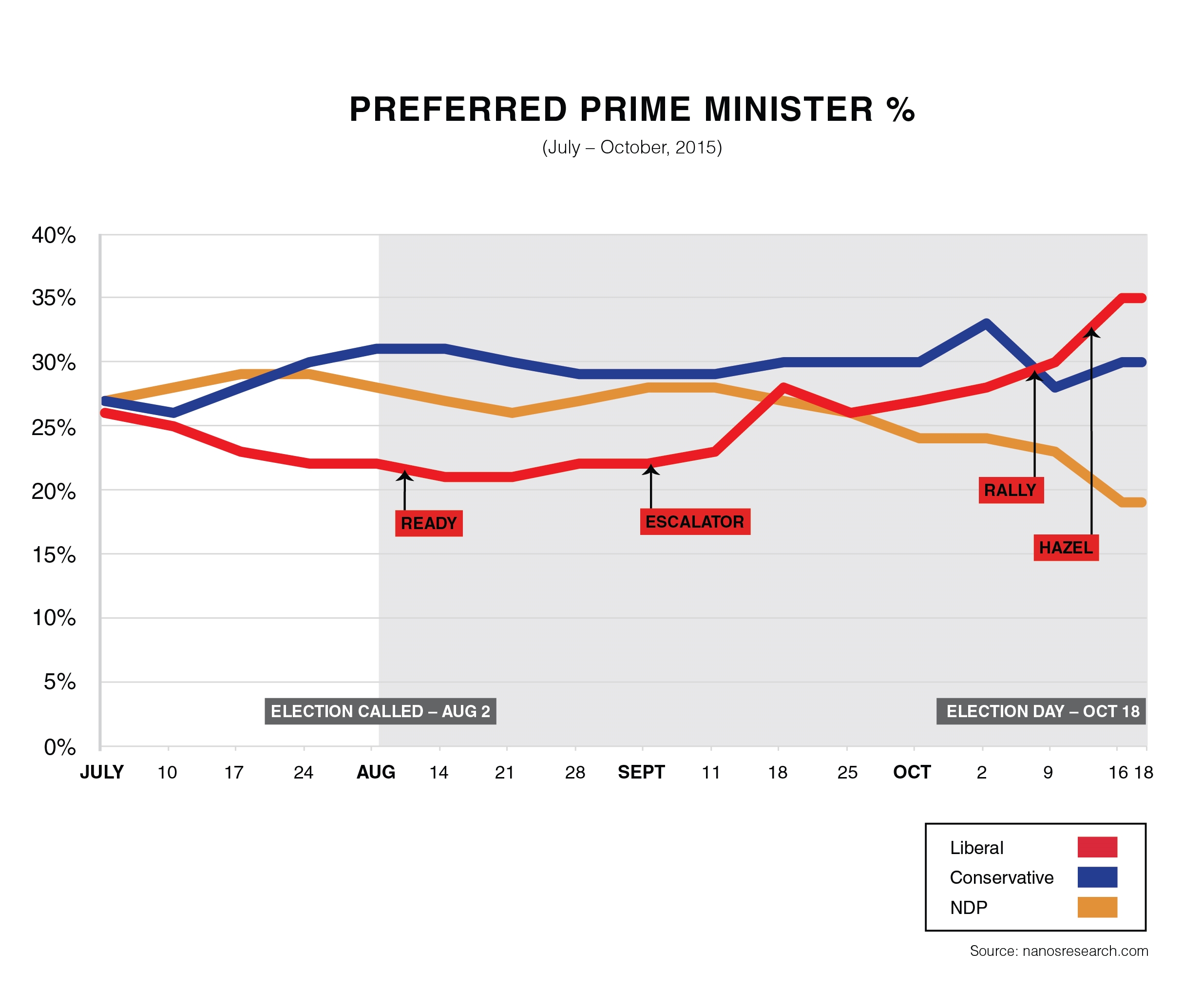
The public polling shows the depths of our position when the campaign launched on August 2nd. Asked to choose who they would support “if an election were held today”, it’s apparent that Trudeau’s gain in vote intention corresponded with the mass advertising campaign.
The Preferred Prime Minister data is a softer and more revealing indicator of the voter attitudes. Shifts in Preferred Prime Minister are more dynamic, and would often precede movements in Vote Intention. After we launched Escalator, Vote Intention was initially slow to respond, but Preferred Prime Minister was consistent with positive responses in focus groups.
Of particular note is the remarkable surge Trudeau takes beginning Thanksgiving weekend (October 9th), when our Rally ad was launched in market and people were engaged and talking about the election.
b) What Business Results did the work achieve for the client?
Trudeau didn’t just win the election; he won a 184-seat majority and made history.
It was the first time a third place leader rose to the Prime Minister’s Office in a single election.
It was the largest ever seat gain in Canada, adding 150 seats to the 34 seats the Liberals had after the 2011 election.
It was the first time in history that a party doubled its share of the popular vote, from 18.9% in 2011 to 39.5%.
c) Other Pertinent Results
More Canadians voted in 2015, with 69% of Canadians casting a ballot, up from 61% in 2011. This election reversed a stubborn two-decade long trend, indicating that the crisis of declining civic engagement may in fact have ended.
The largest increase was among youth voters, with 67% voting, up from 55% in the last election. Youth voters, who coalesced around the Liberal Party, are credited with giving Trudeau his majority government.
In short, the unexpected results of our campaign were not just historic, they provide a new set of rules for political advertising for a new generation of candidates and a new generation of voters.
d) What was the campaign’s Return on Investment?
It is impossible to calculate an ROI for a political campaign. The impact can’t be measured in share-gains or cases-shipped. Already, Trudeau has defined by example what it means to be fair and inclusive, introducing a gender-balanced cabinet, a wake-up call to governments and boardrooms alike – because its 2016.
He introduced his planned middle-class tax cut, increased taxes for the wealthiest 1%, and is actively investing in infrastructure and boosting our economy.
Trudeau welcomed our newest Canadians, 25,000 Syrian refugees, and re-set relations with our oldest Canadians, launching the Missing Murdered and Indigenous Women inquiry, accepting recommendations from the Truth and Reconciliation Commission, investing in indigenous education, health and badly-needed infrastructure.
Trudeau’s popularity has continued to climb. A Forum Poll released this month showed that “if an election were held today”, Trudeau would have 50% support, and an unbeatable super-majority of 246 seats.
“We have to dispense with the idea of a honeymoon romance between Canadians and their new government; this has become a stable marriage, one in which both parties are well past the blushing bride and groom stage, and are starting to work together for a secure future” said Forum Research President, Dr. Lorne Bozinoff.
http://poll.forumresearch.com/post/2569/no-longer-a-honeymoon–now-a-marriage/
Section VI — Proof of Campaign Effectiveness
a) Illustrate the direct cause and effect between the campaign and the results
It’s evident that the advertising coincides with gains in Trudeau’s support, as measured by “Vote Intention” and “Preferred Prime Minister”.
At launch, 21% chose Trudeau’s their Preferred Prime Minister. “Ready” drove it to 28% in one month. “Escalator” pulled us into a virtual 3-way mid-September tie. “Rally” ignited a further rise to 36%, while Harper had fallen to 29%.
We tested all of the advertising In focus groups. About the “Ready” ad, Dan Arnold, the Liberal’s Research Strategist who ran the focus group that night, said in a later interview: “It was probably the most effective ad I’d ever seen in terms of undoing or changing opinions of people”.*
Gerald Butts, Trudeau’s Principal Advisor, emailed National Campaign Director and Chair, Katie Telford, from the back room, saying “We need to spend $4 million on this ad. It is as good an ad as I’ve ever seen.”*
The Nation, the most widely read weekly journal of progressive political and cultural news, opinion and analysis lauded the Escalator ad, saying: “ … there is every reason to recognize the genius of the escalator ad, and the role played by Trudeau’s broad and bold economic message in producing a dramatic political shift.”
The Hazel ad launched on October 14th and ran until the election. Looking at the senior vote between October 11th and October 18th Ekos polls, we see a 19-point swing in vote intention among seniors in just one week! (Nanosresearch.com)
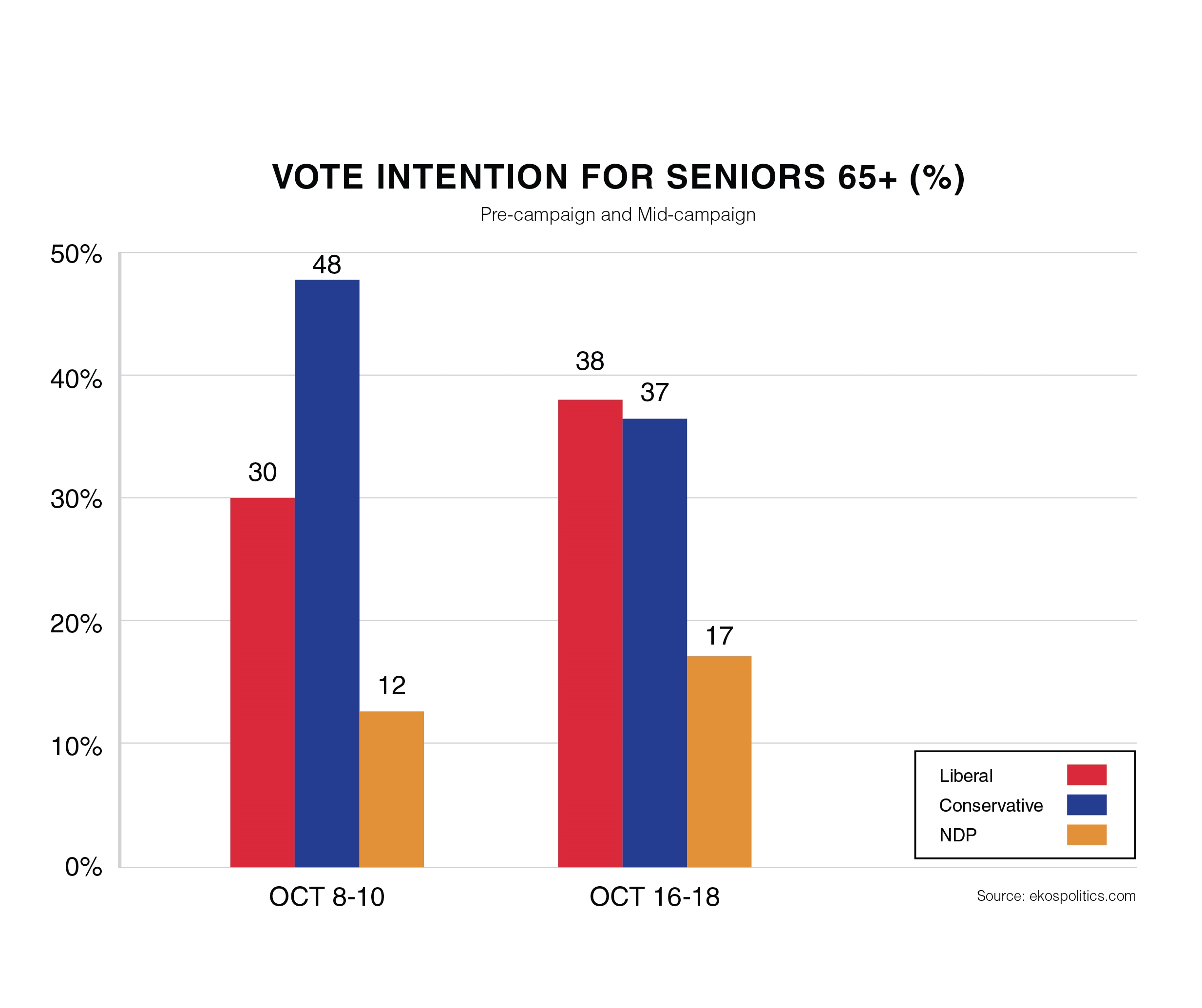
b) Prove the results were not driven by other factors
Campaign spend vs. history and competition:
It would be a terrible thing for democracy if advertising was the only factor that contributed to an election win.
The authentic Justin Trudeau proved captivating to Canadians, but the truth is relatively few Canadians deeply follow politics, so advertising is a powerful tool.
Trudeau’s economic plan was certainly popular with Canadians, although advertising was a factor, too, in dramatizing complex economic theory with a simple escalator metaphor that Canadians understood and related to.
We benefitted in that expectations for Trudeau had sunk very low at the beginning of the election. Before the first debate, Harper’s campaign spokesperson, Kory Teneycke commented to the media about Trudeau, “I think that if he comes on stage with his pants on he will probably exceed expectations.” After the first debate, the consensus was that Trudeau certainly did better than expected in that first debate and each one after.
However, more voters say they intend to watch the debates than voters who actually do. This was never more true than in 2015. In past elections, debates were handled by a consortium of the major television broadcasters. In 2015, Harper refused to be part of the consortium debates, agreeing to 5 private debates. Ultimately the confusion made it difficult for viewers to stream or otherwise access the debates, even if they really wanted to.
The Liberal Party apparently spent less than the Conservatives. After the election, the Liberal Party reported spending an estimated $40 million during the election period. It was estimated that the Conservatives spent $50 million, very close to the $54 million maximum spending limit they were able to obtain by calling the election so early. Note that this is in addition to the ad spending that occurred prior to August 2nd, 2015, which was essentially the “Just Not Ready” ad and al
Pre-existing Brand momentum:
NA
Pricing:
NA
Changes in Distribution/Availability:
NA
Unusual Promotional Activity:
NA
Any other factors:
NA
* Source: Shopping for Votes: How Politicians Choose Us and We Choose Them, Susan Delacourt, 2016